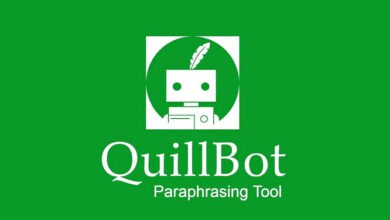
Icons in software development: Icons are ubiquitous, from the attractive design of your smartphone’s home screen to the intricate yet user-friendly interface of your preferred productivity tool. They function as a universal language in the digital realm, conveying functionality and purpose concisely while reducing cognitive burdens for users. But how can these small graphic symbols be strategically applied to optimize their use in software development?
Why are Icons Important?
There are various things to consider when adding icons to software development initiatives. However, before we delve into the ‘how, let’s take some time to navigate through the ‘why.’ Understanding the importance of icons can provide an excellent basis for easily integrating them into software.
The Impact of Icons on User Experience
Icons are the abbreviated language of software, navigating users through interfaces with visual signals and nudges. They simplify the user experience (UX), transforming potentially complex software into intuitive, easy-to-navigate environments. For example, a trash icon universally represents ‘delete,’ whereas a magnifying glass represents search. This linguistic uniformity across software platforms facilitates the user’s efficient and familiar use of icons. Therefore, conquering icons in software development enhances UX, boosting user satisfaction and retention.
Choosing the Right Icons for Your Project
Finding the ideal icon is similar to searching for the perfect word to complete a well-written sentence; it must convey your message concisely and in a way that resonates with your audience. This decision can make or break the user’s ability to understand and communicate with your software. Options range from open-source icon libraries such as Font Awesome to custom icon designs that reflect the unique personality of your software. For instance, iOS app icons have become an integral part of the iOS user experience, signifying the substance of each app at its best with their clear, streamlined design and vibrant colors.
Integrating Icons into Your Software
Once you’ve chosen the icons that best represent the functionality and design of your software, the next challenge is integrating them into your application. It involves an understanding of icon formats, the implementation of CSS classes, and the use of SVGs when necessary. Initially, it may appear to be a complex puzzle, but with a few tactics up your sleeve, it becomes as simple as pie!
Exploring Icon Libraries
In the fast-evolving world of software development, where deadlines are close, and efficiency is of the utmost importance, icon libraries provide a quick, efficient, and cost-effective method for sourcing high-quality icons for your projects.
Icon libraries are pre-made collections of icons that can be easily integrated into the software. They typically include their own CSS classes, making integration easy as pressing a few keys. It saves time and effort in designing and implementing icons from inception, freeing up software development resources for other crucial tasks.
Working with Icon Libraries
Once you’ve learned the basics of working with icon libraries, you’ll be an expert at integrating icons into the software. The vast majority of libraries provide complete documentation and community support, making the process simpler to navigate. Plus, the more you work with these libraries, the better you become at selecting and integrating icons that perfectly match your software.
The Most Common Developer Icon Libraries
The digital landscape is flooded with libraries, each with its icons and features. Popular icons include Font Awesome, Material Icons, and Ionicons. Each of these icon libraries has its strengths and limitations, ranging from the size of its icon collection to its visual importance and usability. Thus, selecting the appropriate library depends on your specific requirements and the specifications of your software project.
Creating Custom Icons
While icon libraries provide a wide range of options, there may be instances when you require a unique icon. It is where the skill of creating custom icons comes into action.
Why Create Custom Icons?
You may communicate your software’s basic idea and functionality with custom icons. They can help your software stand out by providing a unique look and feel that readily recognizable icon libraries may need help to deliver. Custom icons are also a great way to preserve brand consistency and differentiate your software from the competition.
Software for Custom Icon Design
Creating custom icons requires some design expertise and suitable software. Tools such as Adobe Illustrator, Sketch, and even open-source alternatives such as Inkscape may help design distinctive, eye-catching icons for software. These tools provide a variety of features that can facilitate the transformation of your concepts into well-designed, functional icons.
Optimizing Custom Icons for Software Integration
The next stage is to prepare your icon for software integration once it has been designed, optimized, and is ready to flourish. It could involve converting your design to a scalable vector graphic (SVG) for fluid scaling across multiple screen resolutions or creating a sprite sheet to manage various icons.
Best Practices for Using Icons in Software Development
Using icons in software development is an art form; as with any art form, there are best practices. Adhering to these guidelines ensures that your UX icons enhance rather than impede the software user experience.
1. Consistency is Key
Ensuring that your icons’ design, size, and function are uniform throughout your software provides a seamless and intuitive experience for your users. Consistency includes maintaining a consistent design language in which icons complement the overall aesthetic of your software.
2. Simplicity Rules
Icons should be simple and easy to understand. Over complicating icons with excessive detail or abstract design may confuse users, resulting in inefficiency and frustration, defeating the icon’s purpose. Remember that an icon’s primary goal is effectively communicating a function or feature.
3. Accessible for All
It would be best if you made your icons accessible. It includes making sure they are legible for all users, including those with visual impairments, and compatible with assistive technologies. By prioritizing accessibility, you cultivate an inclusive environment where everyone can appreciate your software.
Also Read;
- Best IT Management Software For Your Business
- Best Task Management Software For Your Business
- Main Pillars of Software Development in Java
Conclusion
Understanding the use of icons in software development is an invaluable skill that can significantly improve UX. Remember the importance of simplicity, consistency, and accessibility when designing icons, regardless of whether you’re using icon libraries or creating your own. The fascinating world of icons is ready to add a layer of intuitiveness and refinement to your software!



